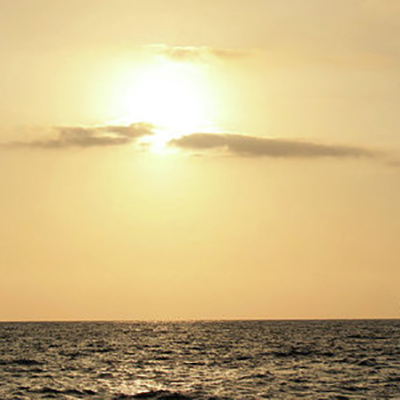Sites
Khor Abdullah
Written by: Mohsen Shirmuhammad,
Translated by: Hadi Qorbanyar
59 Views
Khor Abdullah is an inlet located in the northern Persian Gulf, which witnessed military confrontations during the Iran–Iraq War.
Khor refers to a limited extension of seawater penetrating inland.[1] Khor Abdullah is the second largest inlet in the northern Persian Gulf after Khor Musa, lying between Iraq and Kuwait.[2] It is located between the Kuwaiti islands of Bubiyan and Warbah to the west and the Al-Faw Peninsula of Iraq to the east. It forms part of the maritime boundary between Kuwait and Iraq. This roughly triangular-shaped inlet opens eastward into the Persian Gulf with a mouth approximately 35 kilometers wide, gradually narrowing westward to less than 10 kilometers.[3]
One of Khor Abdullah’s natural features is its sufficient depth, which allows for the establishment of ports along its shores and ensures navigability for maritime traffic. Serving as the principal sea route to northern Kuwait and southern Iraq, it represents Iraq’s most suitable maritime access to the Persian Gulf.[4]
In 1960, the Umm al-Qasr naval base and port were constructed on the northern shore of Khor Abdullah. Subsequently, Iraq dredged the Khor Abdullah waterway to improve its efficiency. The following year, after Kuwait gained independence, Iraq asserted its claim to Khor Abdullah and two southern Kuwaiti islands—driven largely by the rising strategic importance of the Persian Gulf’s continental shelf, its oil and gas reserves, and Iraq’s growing need for direct maritime access to the Persian Gulf. Nevertheless, the borders established in 1923 in Khor Abdullah were reaffirmed in 1963.[5]
In 1977, a wide shipping channel was built from north of the Umm al-Qasr Port through Khor Abdullah to Basra.[6] With the outbreak of the Iran-Iraq War, Iraqi forces repeatedly deployed troops via the southern part of the Khor Abdullah and its southern islands with Kuwait’s approval.[7]
The Iraqi navy operates along a narrow coastline of approximately 80 kilometers. The Basra Port on the Arvand Rud, the naval installations at Al-Faw, and Umm al-Qasr on Khor Abdullah were Iraq’s three main naval bases during the war.[8] As the war continued and Iraq lost access to the Arvand Rud, Khor Abdullah became its sole maritime outlet. The inlet’s proximity to Bubiyan and Warbah islands also made it highly significant for Kuwait.[9]
During Operation Valfajr 8, launched on February 9, 1986, Iran captured the Al-Faw Peninsula, thereby completely sealing the northern edge of Khor Abdullah. This deprived the Iraqi navy of movement and cut off the supply lines of the Al-Bakr and Al-Amiyah oil terminals, which had been supported through the inlet.[10] On April 18, 1988, Iraq recaptured Al-Faw after 28 months.[11] In this operation, hundreds of armed and missile-launching boats, supported by Super Frelon helicopters, used Khor Abdullah to back Iraqi forces.[12]
In 1990, Saddam Hussain invaded Kuwait, and Iraqi forces gained control of Khor Abdullah and its surrounding coasts and islands. After the war and Iraq’s expulsion from Kuwait, the UN Boundary Demarcation Commission was formed to settle the forty-kilometer maritime border within Khor Abdullah. Apart from minor adjustments, the commission reaffirmed the agreements of 1923, 1932, and 1963 between Iraq and Kuwait.[13]
In 2010, Iraq proposed the construction of the Grand Al-Faw Port near Khor Abdullah. In response, Kuwait began building Mubarak Port on Bubiyan Island in 2012. This sparked protests among Iraqi citizens and merchants, in addition to sharp criticism from parliamentary and cabinet figures. Amid rising tensions between Iraq and Kuwait over control of Khor Abdullah, Kuwait’s foreign minister proposed bilateral cooperation in 2014 to jointly manage the waterway to ease diplomatic strains.[14]
[1] Shayan, Siavash. Farhang-e Estelahat-e Joghrafiya-ye Tabiei (Glossary of Physical Geography Terms), Tehran: Entesharat-e Madreseh, 1369, p. 37.
[2] Khor Abdullah, Daneshnameh-ye Eslam (Encyclopedia of Islam), www.rch.ac.ir/article/Details/8880
[3] Ibid.
[4] Khor Abdullah. Daneshnameh-ye Eslam (Encyclopedia of Islam), www.rch.ac.ir/article/Details/8880
[5] Ibid.
[6] Woods, Kevin M. et al. Jang-e Iran va Araq az Didgah-e Farmandehan-e Saddam (The Iran–Iraq War from Saddam’s Commanders’ Perspective), Trans. Abdolmajid Heidari, Tehran: Marz-o-Boom, 1393, p. 303; Sayyari, Habibollah va Majid Mansouri, Tarikh-e Taqvim-e Defa Muqaddas-e NEDAJA, (Sacred Defense Calendar of the Islamic Republic of Iran Navy), Vol. 15, Tehran: Daftar-e Pazhuhesh-ha-ye Nazari va Motaleat-e Rahbordi-ye Niroo-ye Daryayi-ye Artesh-e Jomhouri-ye Eslami-ye Iran, 1392, p. 568; Sayyari, Habibollah va Digaran, Tarikh-e Taqvim-e Defa Muqaddas-e NEDAJA (Sacred Defense Calendar of the Islamic Republic of Iran Navy), Vol. 6, Morvarid, Tehran, Daftar-e Pazhuhesh-ha-ye Nazari va Motaleat-e Rahbordi-ye Niroo-ye Daryayi-ye Artesh-e Jomhouri-ye Eslami-ye Iran, 1390, p. 405.
[7] Khor Abdullah. Daneshnameh-ye Eslam (Encyclopedia of Islam), www.rch.ac.ir/article/Details/8880
[8] Shirmuhammad, Mohsen, Bar Faraz-e Darya-ha: Negahi be Tarikh-e Havadarya va Hamase-ye Eskadranha-ye Havanav, Balgard va Bal-e Sabet dar Jang-e Tahmili (Above the Seas: A Look at the History of Naval Aviation and the Heroism of Hovercraft, Helicopter, and Fixed-Wing Squadrons in the Imposed War), Tehran: Daftar-e Pazhuhesh-ha-ye Nazari va Motaleat-e Rahbordi-ye NEDAJA, 1400, p. 259.
[9] Sharhi bar Amaliyat-e Valfajr 8 (An Account of Operation Valfajr 8), www.isarpress.ir
[10] Ibid.
[11] Alaei, Hussain, Ravand-e Jang-e Iran va Araq (The Course of the Iran–Iraq War), Vol. 2, Tehran: Marz-o-Boom, 1391, p. 433.
[12] Faisal Khazraji, Nazar, Khaterat-e Arteshbod Nazar Abdolkarim Faisal Khazraji Rais-e Setad-e Moshtarak-e Artesh-e Araq dar Doran-e Saddam (Memoirs of General Nazar Abdulkarim Faisal Khazraji, Chief of Staff of the Iraqi Army during Saddam’s Regime), Trans. Muhammadnabi Ebrahimi, Tehran: Atashbar, 1403, p. 479.
[13] Khor Abdullah, Daneshnameh-ye Jahan-e Eslam (Encyclopedia of the Islamic World), www.rch.ac.ir/article/Details/8880
[14] Monaqesheh-ye Marzi-ye Khor Abdullah va Ravabet-e Pishro-ye Koweit va Araq (The Khor Abdullah Border Dispute and the Prospects of Kuwait–Iraq Relations), IRNA, 24 Bahman 1395, www.irna.ir/news/82427018





